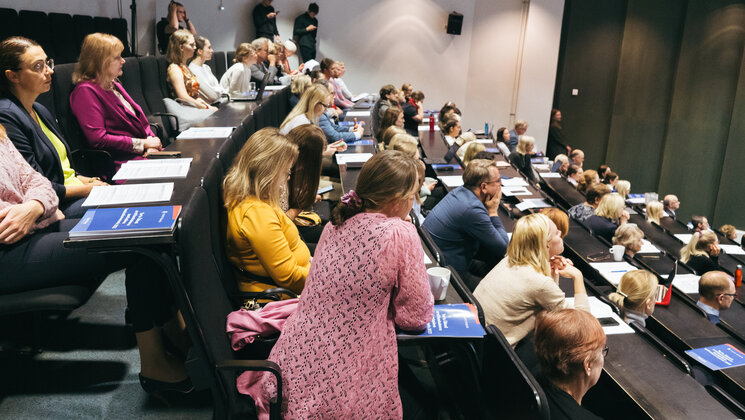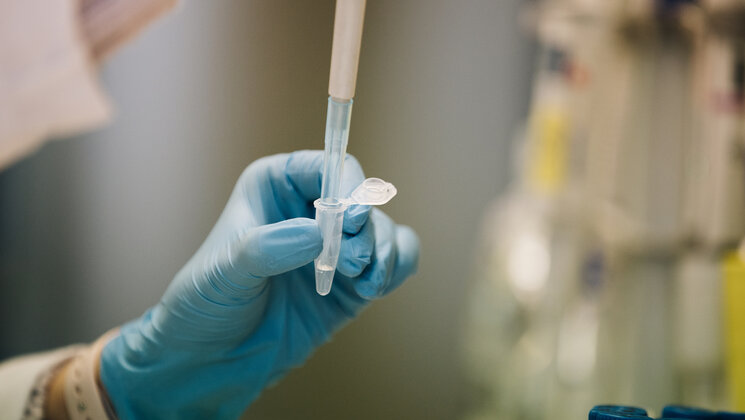-
Faculty of Arts and HumanitiesDean's Office, Faculty of Arts and HumanitiesJakobi 2, r 116-121 51005 Tartu linn, Tartu linn, Tartumaa EST0Institute of History and ArchaeologyJakobi 2 51005 Tartu linn, Tartu linn, Tartumaa EST0Institute of Estonian and General LinguisticsJakobi 2, IV korrus 51005 Tartu linn, Tartu linn, Tartumaa ESTInstitute of Philosophy and SemioticsJakobi 2, III korrus, ruumid 302-337 51005 Tartu linn, Tartu linn, Tartumaa EST0Institute of Cultural ResearchÜlikooli 16 51003 Tartu linn, Tartu linn, Tartumaa EST0Institute of Foreign Languages and CulturesLossi 3 51003 Tartu linn, Tartu linn, Tartumaa EST0School of Theology and Religious StudiesÜlikooli 18 50090 Tartu linn, Tartu linn, Tartumaa EST0Viljandi Culture AcademyPosti 1 71004 Viljandi linn, Viljandimaa EST0Professors emeritus, Faculty of Arts and Humanities0Associate Professors emeritus, Faculty of Arts and Humanities0Faculty of Social SciencesDean's Office, Faculty of Social SciencesLossi 36 51003 Tartu linn, Tartu linn, Tartumaa EST0Institute of EducationJakobi 5 51005 Tartu linn, Tartu linn, Tartumaa EST0Johan Skytte Institute of Political StudiesLossi 36, ruum 301 51003 Tartu linn, Tartu linn, Tartumaa EST0School of Economics and Business AdministrationNarva mnt 18 51009 Tartu linn, Tartu linn, Tartumaa EST0Institute of PsychologyNäituse 2 50409 Tartu linn, Tartu linn, Tartumaa EST0School of LawNäituse 20 - 324 50409 Tartu linn, Tartu linn, Tartumaa EST0Institute of Social StudiesLossi 36 51003 Tartu linn, Tartu linn, Tartumaa EST0Narva CollegeRaekoja plats 2 20307 Narva linn, Ida-Virumaa EST0Pärnu CollegeRingi 35 80012 Pärnu linn, Pärnu linn, Pärnumaa EST0Professors emeritus, Faculty of Social Sciences0associate Professors emeritus, Faculty of Social Sciences0Faculty of MedicineDean's Office, Faculty of MedicineRavila 19 50411 Tartu linn, Tartu linn, Tartumaa ESTInstitute of Biomedicine and Translational MedicineBiomeedikum, Ravila 19 50411 Tartu linn, Tartu linn, Tartumaa ESTInstitute of PharmacyNooruse 1 50411 Tartu linn, Tartu linn, Tartumaa ESTInstitute of DentistryL. Puusepa 1a 50406 Tartu linn, Tartu linn, Tartumaa ESTInstitute of Clinical MedicineL. Puusepa 8 50406 Tartu linn, Tartu linn, Tartumaa ESTInstitute of Family Medicine and Public HealthRavila 19 50411 Tartu linn, Tartu linn, Tartumaa ESTInstitute of Sport Sciences and PhysiotherapyUjula 4 51008 Tartu linn, Tartu linn, Tartumaa ESTprofessors emeritus, Faculty of Medicine0associate Professors emeritus, Faculty of Medicine0Faculty of Science and TechnologyDean's Office, Faculty of Science and TechnologyVanemuise 46 - 208 51003 Tartu linn, Tartu linn, Tartumaa ESTInstitute of Computer ScienceNarva mnt 18 51009 Tartu linn, Tartu linn, Tartumaa ESTInstitute of GenomicsRiia 23b/2 51010 Tartu linn, Tartu linn, Tartumaa ESTEstonian Marine Institute0Institute of PhysicsInstitute of ChemistryRavila 14a 50411 Tartu linn, Tartu linn, Tartumaa ESTInstitute of Mathematics and StatisticsNarva mnt 18 51009 Tartu linn, Tartu linn, Tartumaa EST0Institute of Molecular and Cell BiologyRiia 23, 23b - 134 51010 Tartu linn, Tartu linn, Tartumaa ESTTartu ObservatoryObservatooriumi 1 61602 Tõravere alevik, Nõo vald, Tartumaa EST0Institute of TechnologyNooruse 1 50411 Tartu linn, Tartu linn, Tartumaa ESTInstitute of Ecology and Earth SciencesJ. Liivi tn 2 50409 Tartu linn, Tartu linn, Tartumaa ESTprofessors emeritus, Faculty of Science and Technology0associate Professors emeritus, Faculty of Science and Technology0Area of Academic SecretaryHuman Resources OfficeÜlikooli 18, ruumid 302 ja 304 50090 Tartu linn, Tartu linn, Tartumaa EST0Area of Head of FinanceFinance Office0Area of Director of AdministrationInformation Technology Office0Administrative OfficeÜlikooli 17 (III korrus) 51005 Tartu linn, Tartu linn, Tartumaa EST0Estates Office0Marketing and Communication OfficeÜlikooli 18, ruumid 102, 104, 209, 210 50090 Tartu linn, Tartu linn, Tartumaa EST0Area of RectorRector's Strategy OfficeInternal Audit OfficeArea of Vice Rector for Academic AffairsOffice of Academic AffairsUniversity of Tartu Youth AcademyUppsala 10 51003 Tartu linn, Tartu linn, Tartumaa ESTStudent Union OfficeÜlikooli 18b 51005 Tartu linn, Tartu linn, Tartumaa EST0Centre for Learning and TeachingArea of Vice Rector for ResearchUniversity of Tartu LibraryW. Struve 1 50091 Tartu linn, Tartu linn, Tartumaa ESTGrant OfficeArea of Vice Rector for DevelopmentCentre for Entrepreneurship and InnovationNarva mnt 18 51009 Tartu linn, Tartu linn, Tartumaa EST0University of Tartu Natural History Museum and Botanical GardenVanemuise 46 51003 Tartu linn, Tartu linn, Tartumaa EST0International Cooperation and Protocol Office0University of Tartu MuseumLossi 25 51003 Tartu linn, Tartu linn, Tartumaa EST0
BSL laboratories in Maarjamõisa field
02.03.2022
1. Biomedicum, third floor BSL2 laboratory
- Ravila 19, third floor, right wing, room 3028
- Contact: Allen Kaasik (allen.kaasik@ut.ee)
- It is equipped with a class II laminar hood, Co2 incubator, centrifuge, vacuum aspiration system.
The autoclave is localized nearby. - The Estonian Health Board's license currently covers:
- the work with lentiviral vectors,
- AAV vectors,
- patient fibroblasts and blood,
- immortalized cell lines
2. Biomedicum, first floor BSL2 laboratory
- Ravila 19, first floor, left wing, room 1034
- Contact: Kai Kisand (kai.kisand@ut.ee)
- The laboratory is specifically for blood samples including the blood samples containing SARS-CoV-2
3. SIME BSL2 laboratory
- Ravila 14b, first floor. rooms 121 and 122
- Contact: Ana Rebane (ana.rebane@ut.ee)
- The Estonian Health Board's license currently covers:
- to work Herpes Simplex Virus HSV1,
- with Rhinoviruses RV1B and RV A16.
4. SIME ABSL3 laboratory
- Ravila 14b, Laboratory Animal Centre second. floor, rooms 234 and 222
- Contact: Mario Plaas (mario.plaas@ut.ee)
- The Estonian Health Board's license currently covers:
- to work with adenoviral vectors Ad8 and Ad9,
- with lentiviral vectors in vivo.
5. SIME ABSL2 laboratory
- Ravila 14B, first floor, the laboratory has separate entry and is run by Institute of Technology.
- Contact: Liane Viru (liane.viru@ut.ee)
- They offer wide range of BSL2 and BSL3 level services from cell culture to animal work.
- More information is available in their homepage.
6. TÜTI BSL2 laboratory
- Nooruse 1, fifth floor
- Contact: Kaido Kurrikoff (kaido.kurrikoff@ut.ee)
- The Estonian Health Board's license currently covers:
- to work with SAR-Cov2 and many other pathogens
Moodle course of working in BSL laboratory
Aim of the course:
- give a general overview of laboratory biosafety,
- introduce the requirements of BSL laboratories and pathogens that require the use of BSL laboratories,
- give the attendees the theoretical and practical knowledge of how to work in BSL2 labs.
The course is also a prerequisite to getting approval from the Estonian Health Board to work independently in BSL2 labs
Structure of the course:
- Legislation Individual work
- General Principles
- Specific pathogens
- Self-education
Testing quiz
2 EAP, certification
Practical training in BSL2 lab

Career conference „To new hights with a PhD degree!“
On 16 May, the Estonian Doctoral School Career Conference will be held in Tallinn to discuss the value of doctoral studies and the career prospects of doctoral students. All Estonian doctoral students and those interested in doctoral studies are welcome to attend.

Call for abstracts: scientific conference celebrating the anniversary of the Faculty of Medicine
This year, the Faculty of Medicine's anniversary events will take place on October 10th and 11th. We invite all interested parties to submit abstracts for the Faculty of Medicine's anniversary research conference by May 27, 2024

Testicular maldescent in infertile men may be a sign of a more severe genetic syndrome
Surprisingly high fraction of infertile men presenting congenital testicular maldescent, were revealed as stated in a recent publication by researchers University of Tartu.
